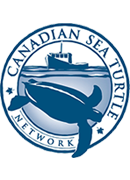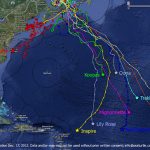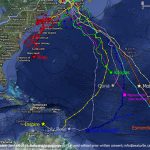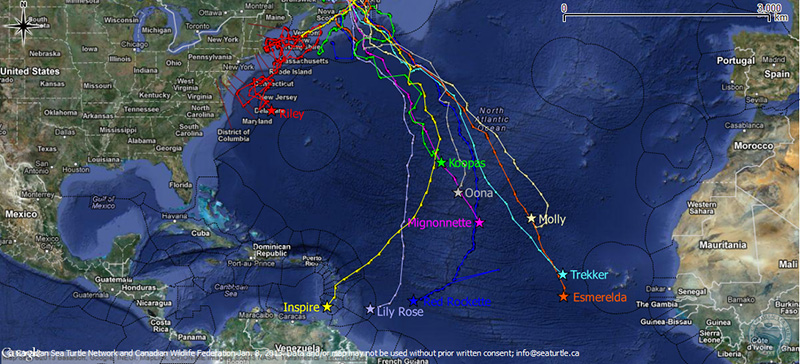
The turtles are turning in toward the mating and nesting grounds. Even Esmerelda, who was just about 750 km from Cape Verde off the coast of west Africa, has started to head slightly west. I expect Trekker to follow suit soon. (Riley is, of course, being Riley and doing her own thing off the continental U.S.!)
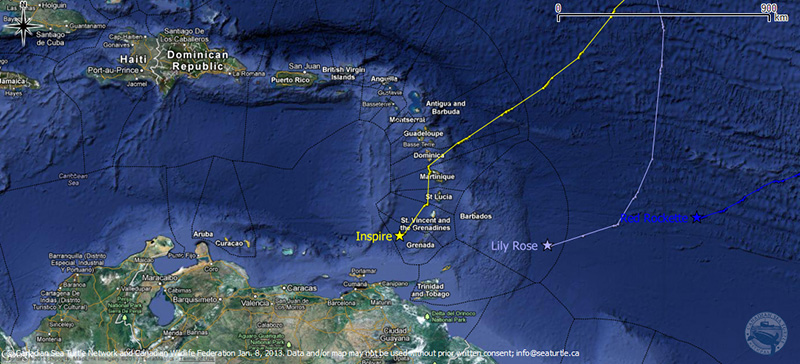
But it’s Inspire I’m particularly interested in today because she illustrates something important. If you look at the close-up of her track, you’ll see what I’m talking about. In just 15 days, she has crossed through the waters of five nations: France (the islands of Guadeloupe and Martinique), Dominica, St. Lucia, St. Vincent and the Grenadines, and Grenada.
Leatherbacks are what we call a “highly” migratory species. Their migrations are immense. This in itself is wondrous. How do the turtles find their way? But migrations of this extent present complications. What happens when an animal that is protected in one country (like Canada) swims into the waters of another country whose interest in protecting it may be different? How can we be certain that our work to keep endangered leatherbacks safe in Canadian waters is upheld in France, Dominica, St. Lucia, St. Vincent, Grenada, and in the many other countries whose waters “our” turtles inhabit?
One way is if the countries agree to work together—a tall order under any circumstances. Back in 1994 nations in the western hemisphere began to talk about how they could best conserve sea turtles in the Americas. What came of those discussions is a treaty called the Inter-American Convention for the Protection and Conservation of Sea Turtles.
Fifteen countries have signed it.
But not Canada. And that bothers me.
As Inspire swims through those political boundaries, I’m reminded of the importance of international cooperation. I think Canadians should be leaders here. I think leatherbacks, making these incredible journeys, deserve our support.
